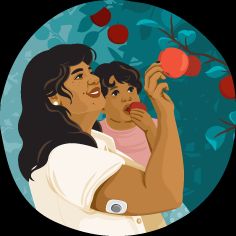Diabetic blisters are fairly rare. Managing your blood sugar levels is the most important step you can take to prevent diabetic blisters and to speed their healing.
If you have diabetes and experience the spontaneous eruption of blisters on your skin, they may well be diabetic blisters. These are also called bullosis diabeticorum or diabetic bullae.
Although the blisters may be alarming when you first spot them, they’re painless and normally heal on their own without leaving scars.
Among the number of skin conditions associated with diabetes, diabetic blisters are fairly rare.
This article takes a closer look at diabetic blisters, including causes, treatment, and prevention.
Diabetic blisters most often appear on your legs, feet, and toes. Less frequently, they may show up on your hands, fingers, and arms.
Diabetic blisters can be as large as 6 inches, though they’re normally smaller. They’re often described as looking like blisters that occur when you get a burn, only without the pain.
The blisters seldom appear as a single lesion. Rather, they occur in clusters. Diabetic blisters contain a clear, sterile fluid, and they’re usually itchy.
The skin surrounding the blisters isn’t normally red or swollen. If it is, see your doctor promptly as it may indicate an infection.
The cause of diabetic blisters is unknown. Many lesions appear with no known injury.
Wearing shoes that don’t fit well can cause blisters. The fungal infection Candida albicans is another common cause of blisters in people who have diabetes.
You’re more likely to get diabetic blisters if your blood sugar levels aren’t well controlled. People who have diabetic neuropathy, nerve damage that reduces sensitivity to pain, are more vulnerable to diabetic blisters.
Peripheral artery disease is also thought to play a role.
Given the risk of infection and ulceration when you have diabetes, you may want to see a dermatologist to rule out more serious skin conditions. Diabetic blisters usually heal in
The fluid in the blisters is sterile. To prevent infection, you shouldn’t puncture the blisters yourself. However, if the lesion is large and hampering your ability to wear shoes, for example, you may want to have a doctor drain the fluid.
This method keeps the skin intact as a covering for the wound, which is seldom the case if the blister ruptures accidentally.
Blisters may be treated with antibiotic cream or ointment and bandaged to protect them from further injury. Your doctor may prescribe a steroidal cream if itching is severe.
Ultimately, keeping your blood sugar levels under control is the most important step you can take to prevent diabetic blisters or to speed their healing.
If you have diabetes, it’s important to be vigilant about the condition of your skin. It’s easy for blisters and lesions to go unnoticed if you have neuropathy.
Here are steps you can take to prevent blisters and to keep from developing secondary infections when you already have blisters:
- Inspect your feet thoroughly each day.
- Protect your feet from injury by always wearing shoes and socks.
- Wear shoes that aren’t too tight.
- Break in new shoes slowly.
- Wear gloves when using scissors, hand tools, and gardening equipment that can cause blisters.
- Apply sunscreen and limit exposure to the sun (ultraviolet light causes blisters in some people).
If you have diabetes, consider contacting a doctor if you develop blisters. Most blisters will heal themselves, but there is a risk of secondary infection.
The following symptoms warrant an immediate call to the doctor:
- redness around the blister
- swelling
- warmth radiating from the lesion
- pain
- fever that accompanies the above symptoms




